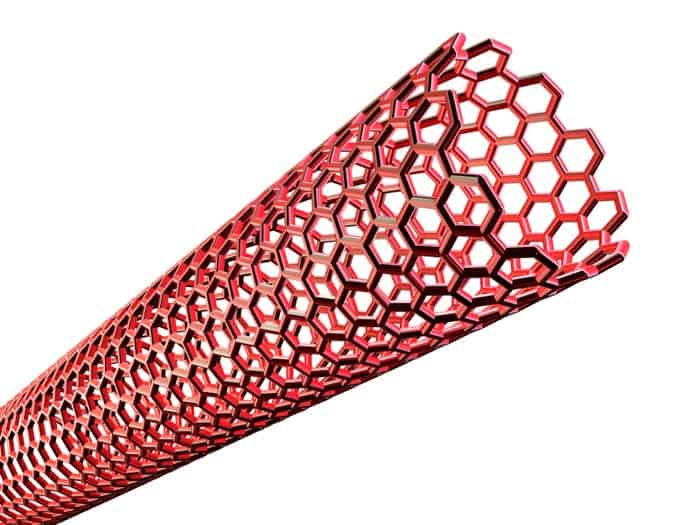
From TNT to nitro-glycerine, nitrogen-rich compounds are known for packing an explosive punch. When these materials explode, bonds between atoms in the compounds are broken, which gives a chance for two nitrogen atoms to form very strong triple bonds with each other. This releases an enormous amount of chemical energy due to the high strength of the triple bond, which is almost six times stronger than its single-bond counterpart. In fact, the strength of nitrogen-nitrogen triple bonds is one of the reasons that the stable nitrogen gas dominates Earth’s atmosphere.
This chemical property of nitrogen is encouraging scientists to develop new nitrogen-rich compounds for use as high energy-density materials that can be used as explosives or propellants. Polymeric nitrogen exists in the form of chains and tubes of linked nitrogen atoms with a high number of single or double bonds that can break and form triple bonds, releasing a large amount of energy and no dangerous by-products.
Several types of these polymers have been made at high temperatures and pressures, but they have been notoriously difficult to stabilize at ambient conditions. However, the electrochemical pressure inside the confined walls of carbon nanotubes may be the key to realizing these structures under more practical conditions. In a paper, published in Chinese Physics Letters, a team of scientists led by Jian Sun at Nanjing University provide a theoretical map to the process and the resulting compounds.
Carbon nanotube nano reactors
When graphene sheets of a single layer of bonded carbon atoms are rolled up, they can form cylindrical molecules with a diameter on the order of nanometres, called carbon nanotubes. Like test tubes, high-strength and high-stability nanotubes can be used as containers for chemical reactions, as they are larger than simple molecules. But nanotubes are not just passive vessels, their small dimensions provide confinement effects that can help stabilize a reaction and even control it. Previously, scientists studied pre-made polymeric nitrogen molecules in nanotubes, yet most have not been fabricated directly in the tubes.
In their recent work, Sun and colleagues use a new computational approach to search and characterize potential polymeric nitrogen structures, like in the conceptual figure above. Modelling the potential inside simplified carbon nanotubes of different diameters, the software looks for possible polymerized structures using a machine learning approach called Magus. Then, the properties and stability of the structures were investigated using molecular dynamics simulations.
Their technique predicted that stable chains and tubes of nitrogen atoms can form in two previously known structures as well as three completely new ones. Both the pressure acting on the nitrogen chains and the confining potentials inside the carbon nanotubes of different sizes highly affect the type of nitrogen structure formed, and consequently its properties.
Polymer predictions
Not only did the researchers predict the existence and stability of different polymeric nitrogen structures, but they also describe their expected properties. Theoretical studies of their vibrational properties suggest the nitrogen structures are likely to be mechanically stable, with the stability being strongly dependent on the size of the nanotubes.

How nanocrystals squeeze through nanotubes
Simulations using models more closely resembling actual carbon nanotubes show that the carbon tubes might sometimes deform to having an elliptical cross-section, further stabilizing the nitrogen chains. Simulations of some of the polymeric nitrogen structures at room temperature suggest that they can be stabilized in bamboo-like nanotube structures. The electronic properties of the structures inside the nanotubes are predicted to range from semiconductors to more metal-like behaviour.
Importantly, the energy density of the polymeric nitrogen is expected to be almost twice that of TNT, suggesting their potency as propellants or explosives.
From theory to experiment
While the research provides an understanding of how confined structures could be used to stabilize nanomaterials, creating these structures in the lab will be a tough task. Using short nanotubes with sodium azides as precursors under laser heating and a mixture of argon and nitrogen might do the trick. Still, the realization of these structures remains a challenge to be faced by experimental chemists.



